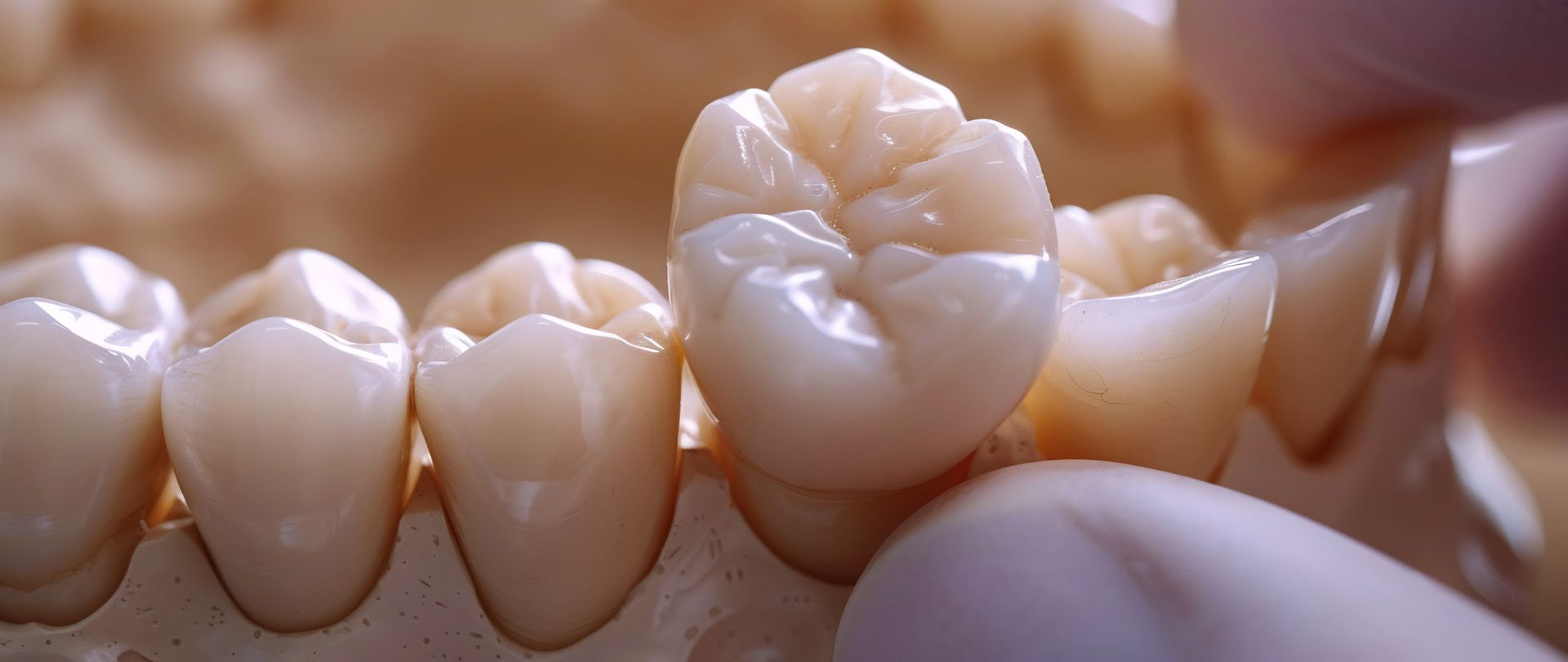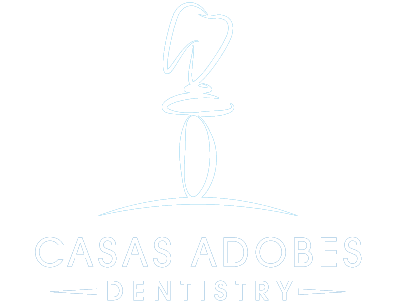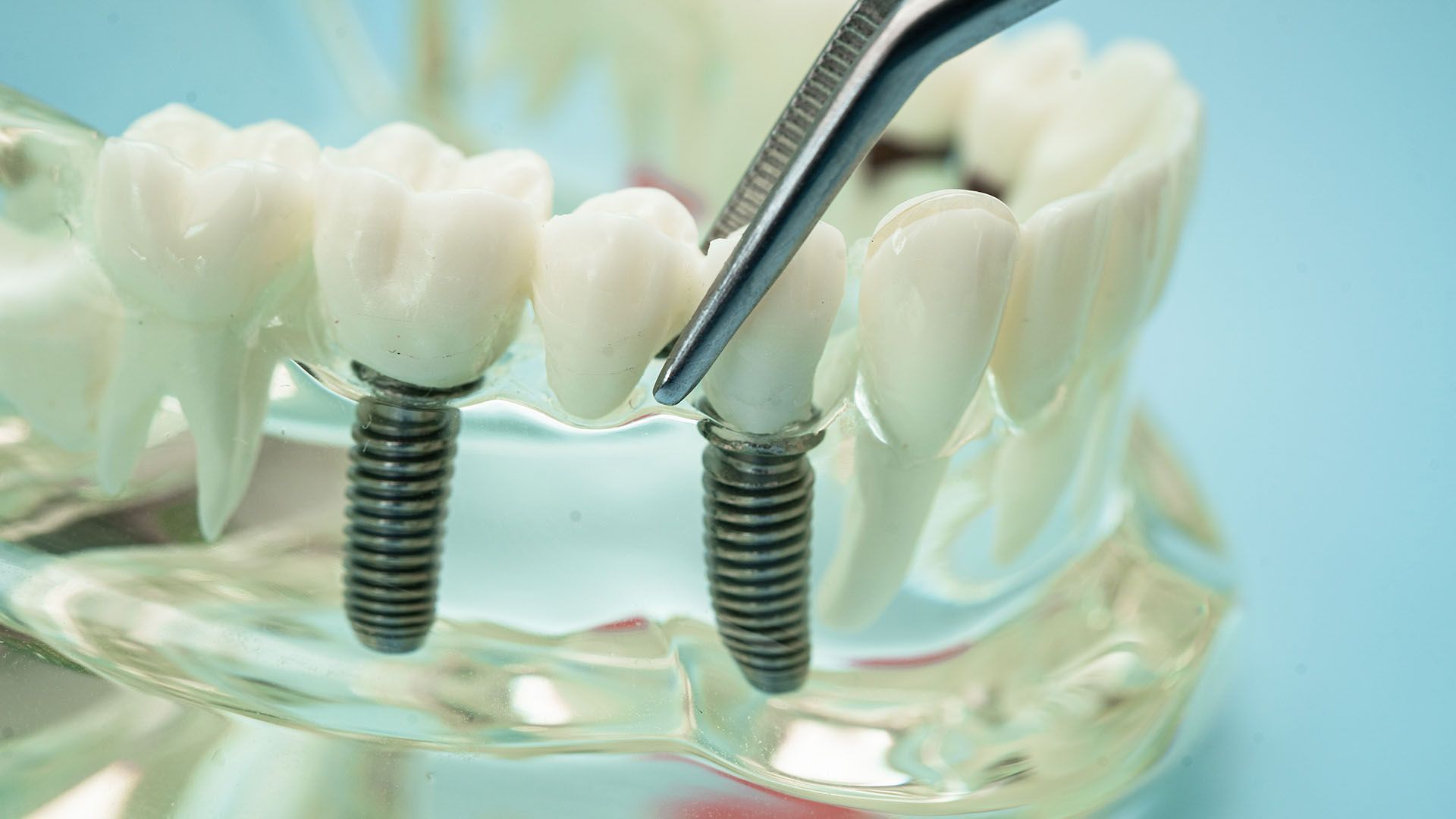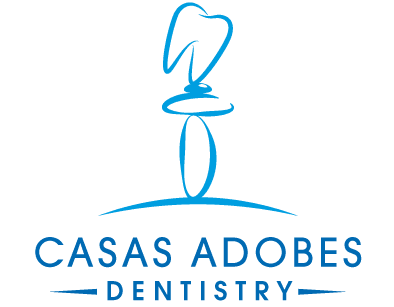How Much Does a Dental Crown Cost? A Complete Breakdown

Written by the clinical team at Casas Adobes Dentistry (CAD)—licensed dentists and dental professionals who plan, prepare, and restore crowns every week—this guide gives you straight answers first, then the details. Our goal is clear, evidence-based explanations and transparent estimates so you can make confident, informed decisions.
Short answer: In the U.S., most dental crowns cost about $900–$2,500+ per tooth before insurance. Your out-of-pocket with insurance often lands around $400–$1,200, depending on your plan’s coverage, deductibles, and annual maximum. Prices vary by material (porcelain, zirconia, porcelain-fused-to-metal, gold), tooth location, and whether you need additional work like a core build-up or root canal.
Average Cost at a Glance
- Typical crown (before insurance): $900–$2,500+
- Dental crown cost with insurance: Many plans classify crowns as “major” care and cover a percentage (often around 50%)
after your deductible—until you hit your annual maximum. That often puts
patient costs in the
$400–$1,200 range for the crown itself.
- Without insurance: Budget
$900–$2,500+ for the crown, plus any supporting procedures.
- Same-day vs. lab-made: Similar overall fee for many practices; occasionally same-day crowns are $100–$300 more due to in-office milling technology, but you save a second visit.
Why the range? Material choice, tooth position (front tooth vs. molar), case complexity, and regional fee differences can shift your total significantly.

What Is a Crown—and Who Needs One?
A dental crown is a custom cap that covers and strengthens a damaged tooth. Dentists recommend crowns for large cavities, cracked or worn teeth, after a root canal, to protect a tooth with a large filling, or to improve shape/color in certain cases. If you’re asking “how much does a dental crown cost?”, odds are a dentist has told you a crown is the most predictable way to restore strength and function.
What Drives the Cost of a Dental Crown
- Straight to the point: The material, where the tooth sits, and extra procedures are the big levers.
- Crown material: Porcelain/ceramic, zirconia, porcelain-fused-to-metal (PFM), or full metal/gold each carry different lab and material costs.
- Tooth location & bite forces:
Molar crowns often take heavier chewing loads and may demand stronger materials or designs.
- Case complexity: Deep decay, fractures, or prior large fillings may require
core build-up or
post & core to support the crown.
- Additional procedures:
Gum therapy,
root canal, bite adjustments, or occlusal guards add cost.
- Technology & lab fees:
Digital scans, CAD/CAM design, and high-quality labs influence fees.
- Experience & region: Fees vary by provider expertise and local market.
Cost by Crown Material (Pros, Cons, Typical Uses)
Short answer: Most patients choose porcelain or zirconia for strength and esthetics. PFM is a durable classic. Gold remains excellent for certain bites and longevity, though less common esthetically.
Porcelain/Ceramic Crowns
- Best for:
Front teeth and highly esthetic areas
- Porcelain crown cost: Generally
$900–$2,000+
- Pros: Natural translucency and color match
- Considerations: Modern ceramics are strong, but material and shade matching can affect price
Zirconia Crowns
- Best for:
Molars, high bite forces, patients who grind
- Zirconia crown cost: Often
$1,000–$2,500+
- Pros: Very strong, increasingly esthetic with layered options
- Considerations: Can be harder to adjust; premium esthetic options may cost more
Porcelain-Fused-to-Metal (PFM)
- Best for: Strength with decent esthetics; time-tested
- PFM crown cost: About
$800–$1,600+
- Pros: Durable, long clinical history
- Considerations: Possible metal “shadow” at gumline over time
Full Metal/Gold Crowns
- Best for: Back teeth, longevity, and gentle wear on opposing teeth
- Gold crown cost: Commonly
$1,200–$2,500+ (metal market prices can influence fees)
- Pros: Excellent fit and longevity
- Considerations: Not tooth-colored; metal cost fluctuates
With Insurance vs. Without Insurance
- Fast take: For many plans, crowns are major services covered at a percentage after your deductible, and only up to your annual maximum.
- Coverage tiers: Preventive (cleanings, exams) is highest, basic (fillings) comes next, and
major (crowns) is typically lower coverage.
- Waiting periods & downgrades: New plans may have waiting periods; some plans
downgrade coverage to a lesser material (e.g., PFM) even if you choose zirconia.
- Annual maximums: Common maximums range
$1,000–$2,000 per year—once reached, additional costs are out-of-pocket.
- Pre-authorization: Helpful to estimate benefits but not a guarantee of payment.
Tip: Ask your dental team to run a benefits check so you know your real dental crown cost with insurance before starting.
Itemized Treatment Breakdown (What You’re Paying For)
Quick view of common line items:
- Exam & diagnostics: Problem-focused exam,
dental X-rays, and sometimes
cone-beam CT if cracks or root issues are suspected.
- Impressions or digital scans: Traditional putty impressions or
digital intraoral scans.
- Temporary crown: Usually included for lab-made crowns to protect the tooth between visits.
- Core build-up: Reinforces tooth structure when decay or fracture has removed substantial tooth.
- Post & core: Used after
root canal when very little tooth remains to hold the crown.
- Final crown fabrication: Either
lab-made (two-visit) or
same-day (milled in-office).
- Cementation & adjustments: Bonding the crown and fine-tuning your bite.
Not every case needs every line item, but core build-ups and post & core are common reasons two patients pay very different totals for the “same” crown.
Root Canal and Crown Cost (Combined)
Short answer: When a tooth needs both, expect the total to be significantly higher than a crown alone.
- Why it adds up: A
root canal (especially on a molar) plus
post & core and then the
crown stacks multiple procedures.
- Timing: Some teeth can be crowned the same day as the root canal; others benefit from a short healing period.
- Insurance: Endodontics and crowns may be covered at different rates and can each draw from your
annual maximum.
Same-Day Crowns vs. Two-Visit (Lab-Made)
Bottom line: Same-day crowns provide convenience and avoid a second injection/visit. Lab-made crowns allow complex layering for top-tier esthetics or specialty materials.
- Same-day workflow: Digital scan → design → in-office milling → seat the crown
in one visit.
- Two-visit workflow: Prep & impression/scan →
temporary crown → lab fabricates → return for final cementation.
- Cost: Often similar; in some regions, same-day may be slightly higher due to equipment and milling blocks.
Ways to Save (Without Cutting Corners)
Quick wins:
- Use your benefits smartly: Time treatment across calendar years to leverage
two annual maximums if appropriate.
- HSA/FSA: Pay with pre-tax dollars if you have a
Health Savings Account or
Flexible Spending Account.
- In-network rates: If you have PPO insurance,
in-network dentists usually have contracted-rate savings.
- Membership/discount plans: Some practices offer
in-house plans or honor
dental savings plans that reduce fees.
- Payment plans & healthcare credit options: Many offices partner with third-party
healthcare credit or provide internal
payment plans to spread costs.
- Material choices: In some cases, choosing a different
crown material that still meets your clinical needs can lower cost.
Crown Lifespan, Warranties, and Replacement Costs
Straight answer: With good home care and regular checkups, crowns commonly last 10–15 years, and many last 15–20+.
- Longevity factors: Bite/grinding (bruxism), oral hygiene, diet, and gum health.
- Protection:
Night guards reduce crack/chip risk if you grind or clench.
- Warranties: Some practices or labs provide limited warranties—ask what’s covered (materials vs. accidents) and for how long.
- Replacement cost: Similar to your original fee structure; sometimes more if additional repairs (like a new build-up) are needed.
Alternatives to a Crown (and How They Compare)
- Onlays/Inlays: Preserve more natural tooth; costs can approach a crown depending on material and lab work.
- Large composite filling: Lower
up-front cost, but may not hold up on heavily damaged teeth—can fail sooner under heavy bite forces.
- Porcelain veneer: Esthetic solution for front teeth, not a structural replacement for heavily damaged molars.
- Extraction +
implant or bridge: Considered when a tooth can’t be predictably restored—higher total cost and longer timelines, but excellent for replacing missing teeth.
What to Expect at Your Appointments
Two-visit (lab-made):
- Visit 1: Numbing, preparation, impressions or digital scans,
temporary crown is placed.
- Between visits: Lab fabricates your custom crown.
- Visit 2: Temporary removed, final crown tried in, adjusted, and cemented.
Same-day (CEREC-style):
- One appointment: Digital scan → design → mill →
cement same day.
- You’ll leave without a temporary crown or second appointment.
Comfort & recovery: Most patients do well with routine numbing. Mild soreness or temperature sensitivity for a few days is common and typically resolves quickly.
Getting a Clear, Personalized Estimate
If you’re near our practice, we’re happy to provide a free cost estimate and benefits check so you know exactly what your dental crown cost with insurance (or without) will be before you decide. We’ll review materials, discuss options to reduce out-of-pocket costs, and outline a transparent plan.
Final Notes
- Fees noted here are
typical ranges for educational purposes; your exact cost depends on your diagnosis, tooth, material, and insurance specifics.
- When comparing estimates, make sure you’re comparing
like for like (material, included follow-ups, temporary crown, and any needed build-ups or posts).
- The most
affordable option is the one that
lasts—choose a plan that balances cost and clinical predictability.
Have questions?
Reach out, and we’ll help you navigate options, benefits, and a timeline that fits your schedule.

Frequently Asked Questions
Do you always need a root canal before a crown?
No. Many crowns are placed without root canals. A root canal is only recommended if the nerve is irreversibly inflamed or infected.
What’s the cheapest type of dental crown?
PFM or certain monolithic ceramics can be more budget-friendly. The “best” choice balances strength, esthetics, and longevity for your tooth and bite.
Are front-tooth crowns more expensive than molar crowns?
Not always. Front teeth may require more esthetic customization, while molars may need stronger materials; either factor can influence fees.
Will insurance cover a replacement crown?
Often yes, but many plans have frequency limits (e.g., replacement only after a set number of years) and may require proof of failure or new decay.
What happens if my temporary crown breaks?
Call your dentist. Temporary crowns are designed to be provisional; they can usually be re-cemented or remade quickly.







